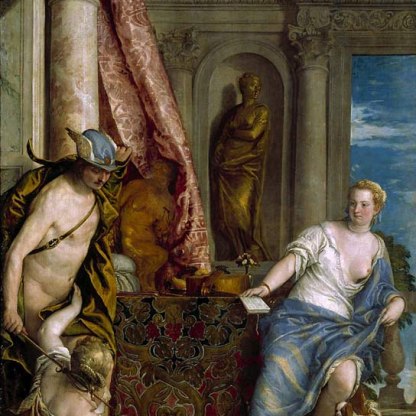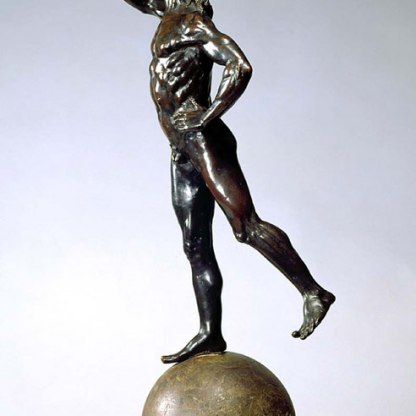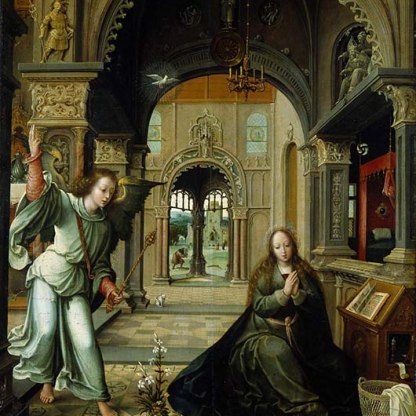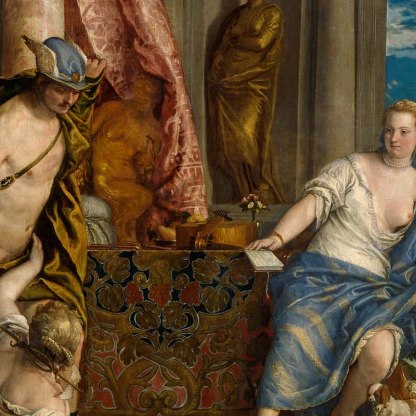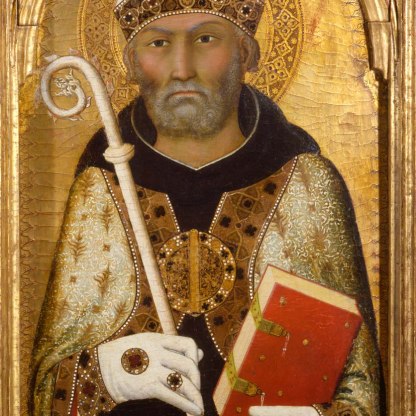Mercury/Hermes
The Greeks knew this god as Hermes; to the Romans he was Mercury. He is easily recognised in art by his winged sandals, on which he flitted between heaven and earth; his hat, which was also often winged; and the caduceus, the herald's staff with which he could induce sleep. In Roman religion, Mercury was a god of commerce and was sometimes shown carrying a purse.
One of the youngest of the twelve chief deities of Olympus, Hermes was a cunning, eloquent character who became the messenger and herald of the gods and the guide of dead souls to Hades. He was the son of Zeus and Maia, a nymph, and he showed his mischievous intelligence from an early age. When only a few days old, he stole a magnificent herd of cattle belonging to the god Apollo. Having killed one of the bulls, he made strings out of its guts, stretched them over the shell of a tortoise and thus invented the lyre. Apollo forgave him his crime in exchange for his beautiful-sounding new toy.
In Greece the god was worshipped as a protector of travellers, and images called 'herms' – which consisted of a head at the top of a pillar with an erect phallus halfway down – marked distances and boundaries on roads. A celebrated fifth-century BCE herm sculpted by Alkamenes was copied much in antiquity. There is an ancient copy of the head from this in the Fitzwilliam.
Hermes was also the protector of shepherds, and in ancient art he was sometimes shown carrying a ram on his back. This image was to be reused in early Christian art as 'the good shepherd' – a figure that stood for Christ in the early centuries CE.
In mythology and the art that it inspires, Hermes is often a supporting actor, subsidiary to the main action. It was he who led the three goddesses Hera, Athena and Aphrodite to Mount Ida where the shepherd Paris was asked to judge which of them was the most beautiful. In an early seventeenth-century painting by the Flemish artist Hendrik van Balen in the Fitzwilliam [416], he is shown at the far right, having done his job and looking on, curious to see the result of the contest.

His most popular solo escapade was lavishly painted in the sixteenth century by Paolo Veronese on a large canvas in the Fitzwilliam, above [143]. Having fallen in love with the Athenian princess Herse, he enters her chamber to find the way barred by her jealous sister, Aglauros. Driven by lust, he taps Aglauros with his caduceus and she turns at once into a black stone.

As a divine messenger and accompanier of dead souls, Hermes bears a striking similarity to the archangels of Christian imagery. In an early sixteenth-century Flemish painting of the Annunciation in the Fitzwilliam [98], what looks like a statue of the god watches Gabriel bring the news of Christ's conception to Mary, his caduceus dwarfed by the lily that Gabriel holds. It is implied that the pagan god is obsolete and impotent within the new Christian context.
Other highlight objects you might like
Other pathways and stories you might like
Sign up to our emails
Be the first to hear about our news, exhibitions, events and more…

